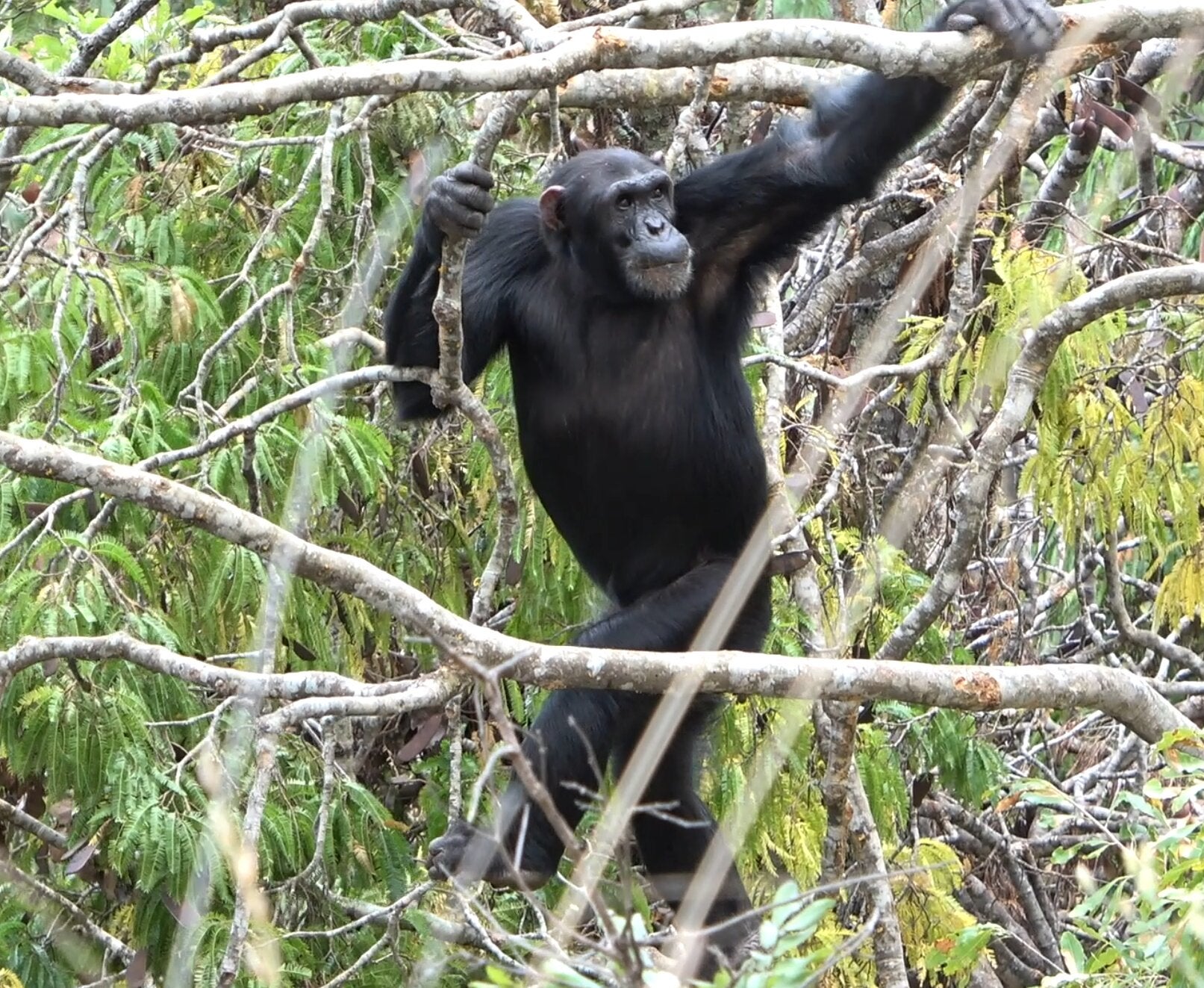Chimpanzees in Tanzania help British scientists solve mystery of why humans walk on two legs
Early humans probably first walked upright in the trees, study finds

Chimpanzees are helping scientists based at British and American universities to solve one of the biggest mysteries of human evolution – why humans walk on two feet rather than four.
It’s a crucial question because having upper limbs with hands rather than just feet has allowed humans to make tools, develop bigger brains and succeed in ways that no other animal has ever been able to do.
Chimps in a woodland area in the interior of Tanzania have been providing scientists with some of the crucial data needed to more fully understand a key aspect of human evolution.
The origins of bipedalism have always been a mystery, with two main competing theories – that humans evolved this way by moving around in trees or that they wandered around in treeless grassland.
But observations about how the Tanzanian chimps use their limbs are beginning to tip the balance in favour of the former theory.
The observations are also shedding light on the evolutionary pressures and sequence of events involved.
Like so many evolutionary changes, bipedalism is likely to have accelerated as a result of climatic and ecological changes that destroyed ancient tropical forests and replaced them with grasslands and open woodland in which only smaller patches of dense forest managed to survive.
Some scientists thought that this environmental change had forced early humans out of the trees into savanna habitats, where they then developed bipedalism.
But, by observing modern chimpanzee communities in both dense forest and open woodland environments, scientists now think it was probably patches of forest and woodland, rather than grassland habitats, that drove early human bipedalism.
Contrary to expectations, the chimps quadrupled their bipedal activity in trees when in less dense woodland compared with dense forest environments.
The likely reason was that food was less easy to obtain in an open woodland environment than in a dense forest and that therefore they needed to do more foraging in less accessible areas of the woodland canopy.
What the new chimp observations suggest is that, in order to access those more challenging areas of the woodland canopy, they had to more frequently deploy and therefore develop their bipedalism – because their upper limbs had to be more frequently used to grasp tree branches immediately above them.
The research – by scientists from the University of Kent, University College London, and Duke University, North Carolina – began in 2020 and is due to be completed by 2024.
“Our fieldwork is crucial because understanding why we walk on two legs is essential to understanding what it is to be human,” said the project’s lead researcher, anthropologist Rhianna Drummond-Clarke.
The team has concentrated on observing chimp bipedalism in open woodland in Tanzania and has compared their findings with earlier observations of chimps carried out in dense forests in Uganda by other scientists.
Ms Drummond-Clarke, of the University of Kent, spent 10 months observing a troop of 18 chimpanzees – seven adult males, six adult females, four juveniles, three adolescents and five infants – in a 12-square-mile mountainous, mainly open woodland environment in western Tanzania.
Preliminary results have been published in a paper in the US open-access online journal Science Advances.






Join our commenting forum
Join thought-provoking conversations, follow other Independent readers and see their replies
Comments